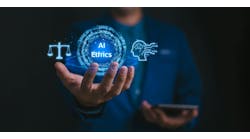According to a Feb. 15 article, a machine-learning (ML) algorithm developed at the Stanford School of Medicine uses the electronic health record (EHR) data of mothers and babies to predict how at-risk newborns will do in their first two months of life. The new method, described in an online study in Science Translational Medicine, allows clinicians to classify which infants are likely to develop complications of prematurity at or before birth.
The article says that “Traditionally defined as birth occurring at least three weeks early, premature birth is linked to complications in babies’ lungs, brains, vision, hearing and digestive system. Although earlier births generally carry higher risks, the timing of birth predicts only approximately how a specific infant will fare. Some infants who are born quite early develop no complications, while others born at the same stage of pregnancy become very ill or die.”
Further, “The researchers linked electronic medical records for mothers at Stanford Health Care and for their babies at Stanford Medicine Children’s Health, covering 32,354 live births that occurred between 2014 and 2020. The mothers’ medical records included information from the pregnancy and, for those who had been patients at Stanford Medicine prior to pregnancy, health data from before they became pregnant. The infants’ records started with information recorded at birth, including weight; blood tests; and Apgar score, which is assessed in the delivery room one and five minutes after birth. The Apgar score incorporates factors such as the infant’s pulse, breathing and muscle tone.”
The machine learning algorithm used is called a long short-term memory neural network. The researchers created a mathematical model from EHRs and tested if the algorithm could predict 24 possible health outcomes for infants up to two months after birth.
The article adds that “At the time of birth, the machine learning model provided strong predictions for which infants would develop various conditions including bronchopulmonary dysplasia, a type of chronic lung disease; retinopathy of prematurity, a problem with the retina that can cause vision loss or blindness; anemia of prematurity; and necrotizing enterocolitis, a severe gastrointestinal complication often not diagnosed until weeks after birth, by which time interventions are complex and associated with poor outcomes.”
The model’s predictions at birth, according to the article, provide more accuracy than Apgar scores and the National Institute of Child Health and Human Development risk score, as those scores only consider the condition of the baby at birth and don’t incorporate any information from the mother’s medical history. Yet, researchers say that more studies are needed in more diverse populations before the tool is ready to replace any existing risk calculators.
The algorithm was able to link specific types of socioeconomic disadvantage in mothers with certain prematurity complications in their babies.
Senior study author Nima Aghaeepour, Ph.D., an associate professor of anesthesiology, perioperative and pain medicine and of pediatrics, Stanford School of Medicine was quoted in the article saying that “If a mother was homeless, we found that the health impact on the baby would be different from the impact of incarceration, whereas under traditional paradigms both of these socioeconomic factors might be thought to have similar effects on prematurity risk.”
Scientists from UC San Francisco contributed to the study and funding for the research was provided by the National Institutes of Health, the Burroughs Welcome Fund, the American Heart Association, the March of Dimes, the Robertson Foundation, the Alfred E. Mann Foundation, and the National Science Foundation.


